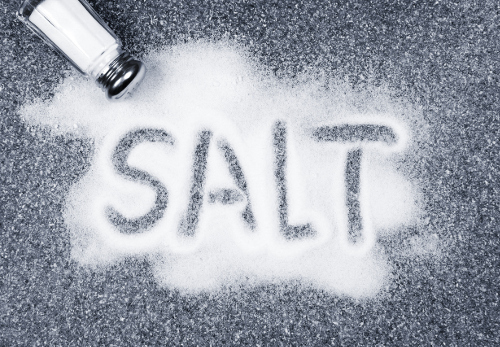 It’s no secret that salt intake plays a serious role in your heart health. Too much sodium can raise your blood pressure to dangerous levels, which can increase your risk of heart disease. But, holding back on that sprinkle of table salt on your potato or cutting it out from your famous meatloaf recipe won’t go very far in protecting you from the dangers of too much sodium. In fact, it’s unlikely to even make a dent in total intake.
It’s no secret that salt intake plays a serious role in your heart health. Too much sodium can raise your blood pressure to dangerous levels, which can increase your risk of heart disease. But, holding back on that sprinkle of table salt on your potato or cutting it out from your famous meatloaf recipe won’t go very far in protecting you from the dangers of too much sodium. In fact, it’s unlikely to even make a dent in total intake.
According to a new study published last week in Circulation, the journal of the American Heart Association, only about 10% of dietary salt comes from food prepared at home. The average American consumes about 3,500 milligrams (mg) of salt per day, which is much higher than the 2,300-milligram limit recommended for heart health. So, as you can see, trying to save 350 milligrams of salt isn’t a big issue.
Where Is Your Salt Coming From?
So, where is all the extra salt coming from? That’s a great question, because if the average person is only adding about 350 milligrams of salt to their meals or recipes as a seasoning each day, there’s still a long way to go to hit 2,300 milligrams.
Most of the sodium consumed by Americans comes from processed, packaged, and prepared foods. So, the loaf of bread, can of soup, and box of crackers in your pantry, as well as the slice of pizza you picked up for lunch or the meal at your favorite restaurant, are the main culprits putting your health at risk.
Salt is a big-time additive that provides flavoring and shelf life to some of your favorite foods. And, even if you can’t taste it, believe that it’s there.
Store-bought and restaurant-made sauces, breads, and rubs are rife with salt, too. So, if you’re frequently dining at restaurants or eating a lot of prepared or processed foods, you’re getting dangerously high levels of sodium in your diet that can be a major health risk.
Ways to Reduce Your Salt Intake
Sure, I can go ahead and tell you to lower your sodium intake and not feel guilty about adding salt to your recipes or dinner plate. But, that’s not where the problem lies, and it won’t help a thing. What I can tell you is how to reduce your overall salt intake, and even make some suggestions about what you can eat to circumvent the sodium problem.
1. Go Low-Sodium
The first thing you can do is buy low-sodium options at the grocery store. Although this isn’t ideal, it’s certainly realistic and can be beneficial to your health. According to some studies, lowering sodium intake by 400 milligrams per day could prevent 32,000 heart attacks and 20,000 strokes every year.
2. Avoid Processed Foods
You can also try to make a more conscious effort when preparing food at home by using fresh, unprocessed ingredients to keep sodium levels in check. When you do have to buy packaged food such as bread or pasta, select whole grain options that offer nutritional benefits. You can also look at your favorite restaurant’s nutritional information online to see which low-sodium options are available. Doing this can help you make safer decisions when you’re eating out.
3. Increase Your Potassium Intake
Another thing you can do—and it just might be as important to heart health as sodium intake—is to make sure you’re eating enough potassium every day. Most people don’t get enough potassium because it’s largely absent from processed foods, but it plays a key role in heart health.
A fantastic way to lower blood pressure and the risk of heart disease is to try to consume more potassium than sodium—at least 3,500 milligrams per day. Some great sources of potassium include potatoes, bananas, beans, yogurt, and dark leafy greens like spinach. And, don’t worry if you need to sprinkle a little salt on your spinach or potato; you’re safe!
Source:
“Just 5 Percent of Daily Salt Gets Added at the Table,” MedlinePlus, May 8, 2017; https://medlineplus.gov/news/fullstory_165341.html, last accessed May 11, 2017.
